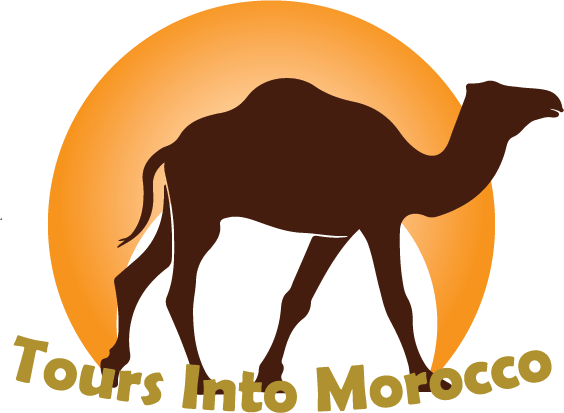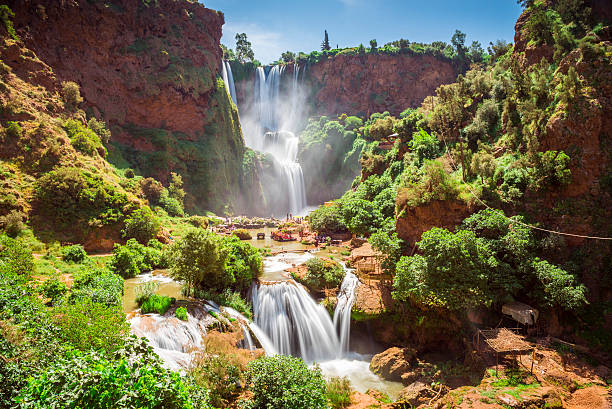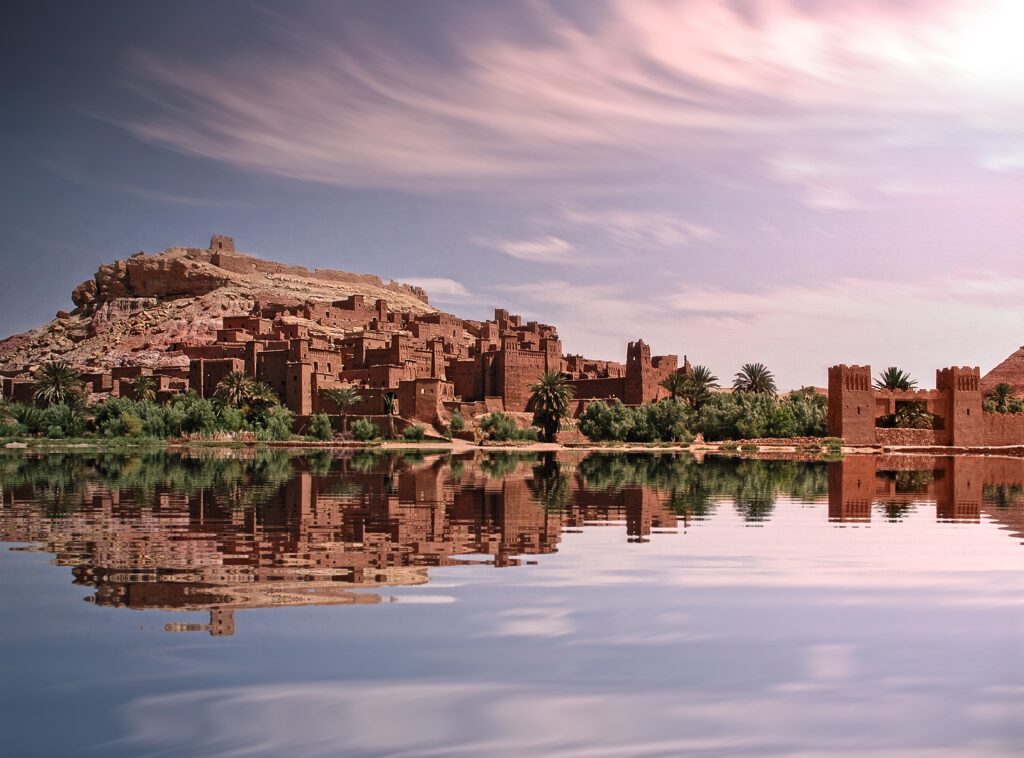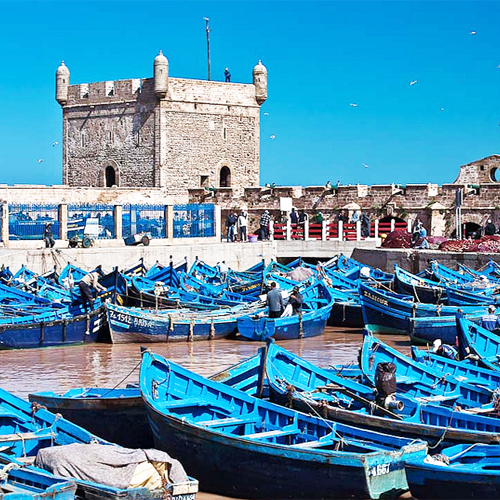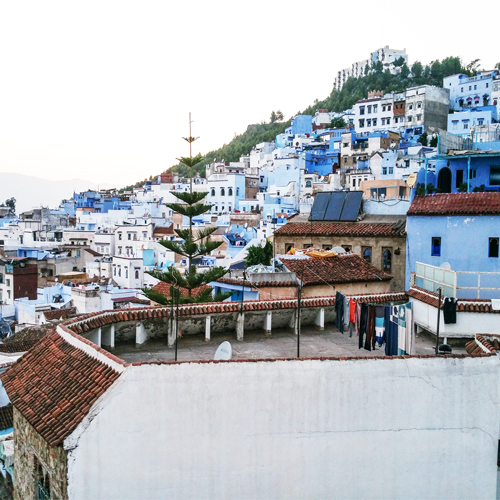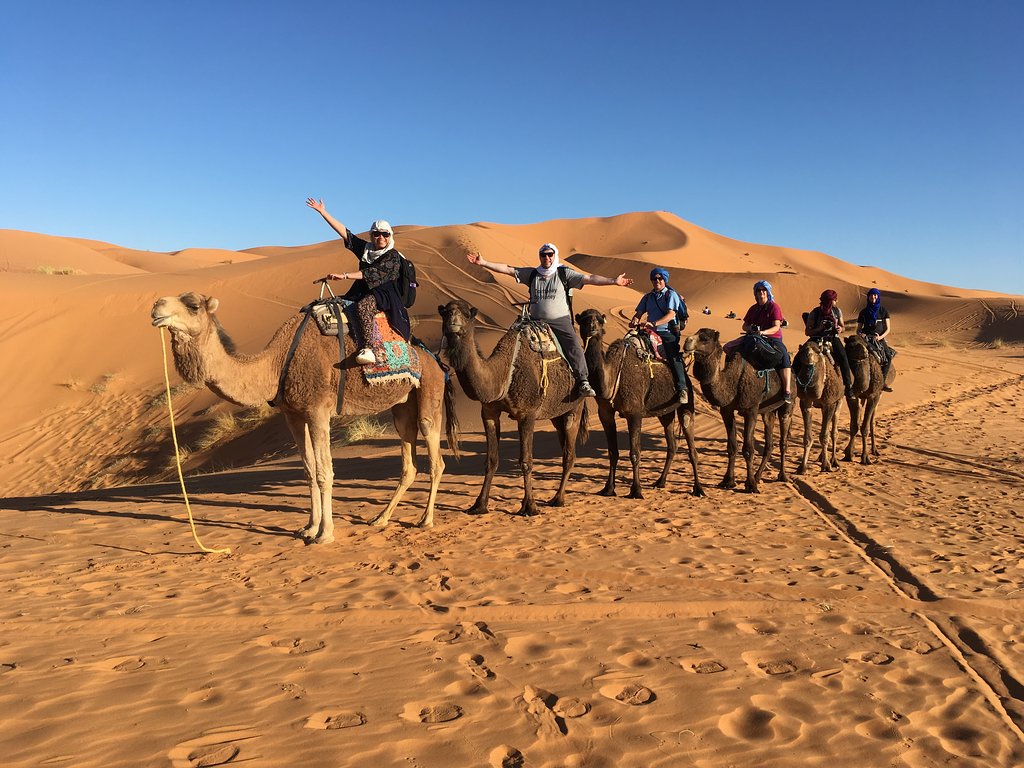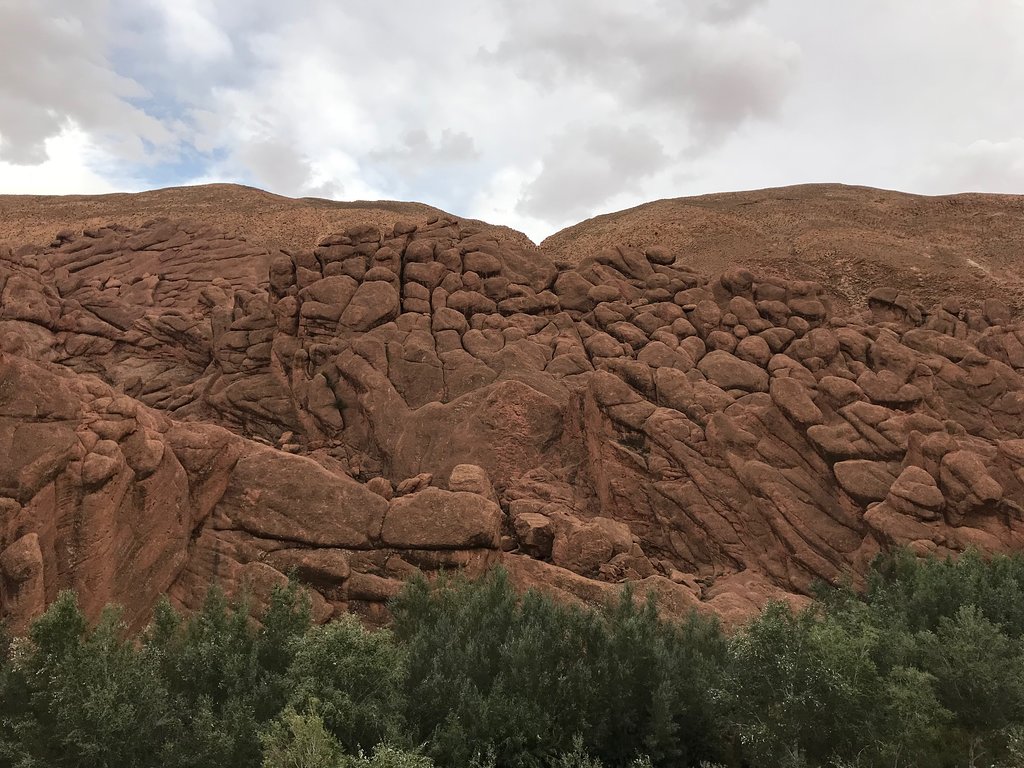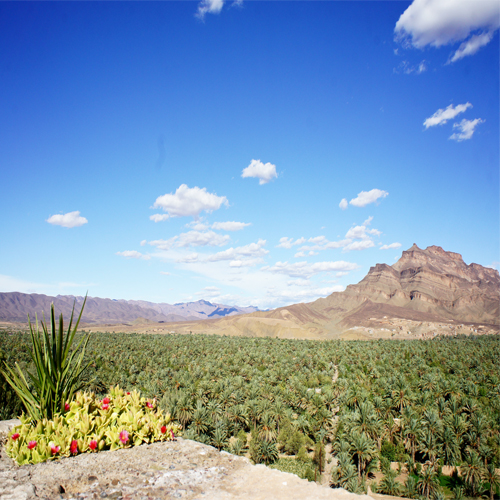Top things to do in Morocco Marrakech
The fourth-biggest city in Morocco Marrakech. Found in Morocco, it is the capital of the Marrakesh-Safi area and one of the country’s four imperial cities. West of the Atlas Mountains’ foothills is where it is located.
Since the Neolithic era, Berber farmers have lived in the area. As the imperial capital of the Almoravid Empire, the city was established in 1070 by Emir Abu Bakr ibn Umar. The city’s plan was fashioned for generations to come by the Almoravids, who also built the majority of its initial buildings. The city is known as the “Red City” because of its red walls, which were completed in 1122–1123 by Ali ibn Yusuf, and other red sandstone buildings that were built later. Marrakesh expanded quickly, becoming known as a cultural, religious, and trading center for the Maghreb.
Following a period of decline, Fez outperformed the city. Early in the 16th century, Marrakesh rose to prominence as the capital of the Saadian dynasty. Sultans Abdallah al-Ghalib and Ahmad al-Mansur embellished the city with opulent palaces like the El Badi Palace (1578) and restored numerous abandoned monuments. Due to its seven patron saints who are interred within the city’s walls, the city gained popularity among Sufi pilgrims starting in the 17th century. When the French Protectorate of Morocco was formed in 1912, T’hami El Glaoui was named Pasha of Marrakesh. He remained in this capacity for almost the entire protectorate until Morocco gained its independence and the monarchy was restored in 1956.
Jemaa el-Fnaa square
Jemaa el-Fnaa square Morocco Marrakech
One of the most well-known squares in Africa, the Jemaa el-Fnaa serves as the hub of commerce and city life. It has been referred to as a “world-famous square” , “a metaphorical urban icon, a bridge between the past and the present, the place where (spectacularized) Moroccan tradition encounters modernity.” Since 1985, it has been a component of the UNESCO World Heritage site. The term “ruined mosque” or “mosque of annihilation” is one of the square’s many probable meanings. Historians believe this to be the most likely derivation, which refers to the construction of an unfinished mosque within the square in the late 16th century that vanished.
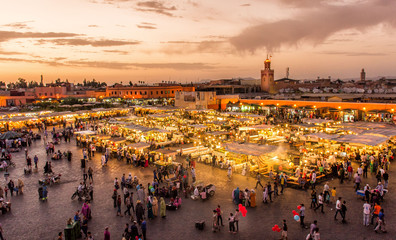
Originally, the plaza served as a market place on the east side of Ksar el-Hajjar, the principal palace and stronghold of the Almoravid dynasty, who established Marrakesh. After the Almohads took control of the city, the old Almoravid palace was abandoned and a new royal palace complex, known as the Kasbah, was established south of the city; however, the market square survived. Then, as the city’s fortunes changed, Jemaa el-Fnaa experienced times of deterioration and rebirth.
Souks
Morocco’s largest traditional market is located in Marrakesh, and the city’s souks greatly shape its perception. In the past, Marrakech’s souks were separated into shop sections dedicated to selling specific items including ceramics, leather, metalwork, and carpets. Despite much overlap, these categories are still approximately in place. Carpets and rugs, leather bags, lanterns, and traditional Muslim clothing are all sold in several of the souks. In the souks, haggling remains a crucial aspect of commerce.
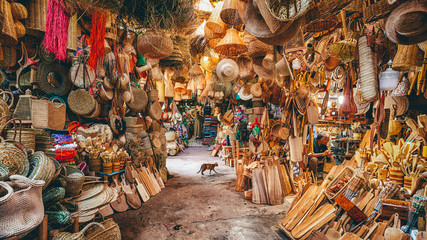
Souk Semmarine is one of the biggest souks, offering a wide range of products from jewelry and kaftans to vibrantly colored bejeweled shoes, slippers, and leather pouffes. There are vendors in Souk Ableuh that specialize in lemons, chiles, capers, pickles, green, red, and black olives, as well as mint, which is a staple of Moroccan tea and food. Likewise, Souk Kchacha focuses on dehydrated fruit and nuts, such as figs, dates, cashews, walnuts, and apricots. Hand-woven baskets, natural perfumes, knitted headwear, scarves, t-shirts, Ramadan tea, ginseng, and alligator and iguana skins are among the items available at the stands in Rahba Qedima. Northeast of this market is the Criée Berbère, famous for its dark Berber rugs and carpets.
Souk Siyyaghin is renowned for its jewelry, while the neighboring Souk Smata is well-known for its enormous assortment of belts and babouches. Souk Belaarif offers contemporary consumer products, whereas Souk Cherratine specialized in leatherware. Souk Haddadine is an expert in lanterns and iron goods. Street cuisine in the Medina is another reason for its fame. Mechoui Alley is especially well-known for its lamb dishes that are slow-roasted. The government-run Ensemble Artisanal is a complex of modest arts and crafts that is close to the Koutoubia Mosque. It sells a variety of leather goods, textiles, and carpets. A variety of crafts are taught to young apprentices in the workshop located in the rear of this facility.
City walls and gates
For defensive purposes, the Almoravids constructed Marrakesh’s ramparts, which encircle the city’s medina for around 19 km (12 km). The city is known as the “red city” because of its well-defined orange-red clay and chalk walls, which may reach heights of up to 19 feet (5.8 meters) and are adorned with 200 towers and gates.
Among the city’s gates, Bab Agnaou is the most well-known. It was constructed as the primary public entry to the new Kasbah in the late 12th century by Ya’qub al-Mansur, the Almohad caliph. Similar to Gnaoua, the Berber word Agnaou denotes individuals of Sub-Saharan African descent (see Akal-n-iguinawen, which means “land of the black”). According to certain historical accounts, the gate was known as Bab al Qsar (palace gate) or Bab al Kohl (the word kohl also meaning “black”).There are floral designs on the corner pieces. Three panels, also utilized in Al-Andalus, frame this decoration. They bear an inscription from the Quran written in Maghrebi script utilizing foliated Kufic letters. During Sultan Mohammed ben Abdallah, Ali’s reign, Bab Agnaou underwent renovations and had its opening scaled back.
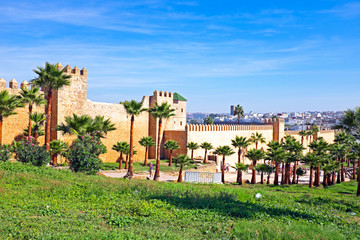
Bab Doukkala, Bab el-Khemis, Bab ad-Debbagh, Bab Aylan, Bab Aghmat, Bab er-Robb, Bab el-Makhzen, and Bab el-‘Arissa are the medina’s eight principal historic gates. Many of these have been altered since they were originally created in the 12th century, during the Almoravid era. Bab Doukkala, located in the northwest section of the city wall, gets its name from the Doukkala region on the Atlantic coast, which is located far to the north of Marrakesh. Generally speaking, Bab Doukkala is more huge and less ornate than the other gates. Located in the northeastern corner of the medina, Bab el-Khemis gets its name from the open-air Thursday market (Souq el Khemis). It has a man-made spring and is one of the city’s principal entrances.
Eastward lies Bab ad-Debbagh, which features one of the most intricate designs of any gate, featuring an inner corridor that twists and bends. A little further south of it is Bab Aylan. One of the principal southern gates of the city, Bab Aghmat is situated close to Ali ibn Yusuf’s mausoleum and east of the Jewish and Muslim cemeteries. The other primary southern exit from the city is Bab er Robb, which is close to Bab Agnaou. Its peculiar location and design could be the product of several years’ worth of changes made to the neighborhood. It has access to highways that go to the mountain villages of Asni and Amizmiz.
Marrakech Tour Guides
- Duration: 1 Days
- Start Point: Marrakech
- Duration: 1 Days
- Start Point: Marrakech
- Duration: 1 Days
- Start Point: Marrakech
- Duration: 1 Days
- Start Point: Fes
2 days tour Marrakech to Merzouga desert
=> Tour price: $120-450
=> Duration: 2-4 days
=> Small Group tours Morocco size: 2-50 tourists
=> Languages: Italian, English, French, Spanish, German
3 days desert tour from Marrakech to Fes
=> Tour price: $100-500
=> Duration: 2-4 days
=> Small Group tours Morocco size: 2-50 tourists
=> Languages: Italian, English, French, Spanish, German
4 days trip to Fes from Marrakech via desert tour
=> Tour price: $120-500
=> Duration: 2-4 days
=> Small Group tours Morocco size: 2-50 tourists
=> Languages: Italian, English, French, Spanish, German
6 days desert tour Marrakech to Casablanca and Merzouga
=> Tour price: $120-500
=> Duration: 2-4 days
=> Small Group tours Morocco size: 2-50 tourists
=> Languages: Italian, English, French, Spanish, German
Tours Into Morocco
Tours Into Morocco is a progressive travel agency that offers its clients a variety of tours and destinations to enjoy. With our travel services, you can go anywhere you want, from the landscapes of the High Atlas Mountains to the deepest Moroccan Sahara desert, to the imperial cities to discover everyday life and the real Morocco.
